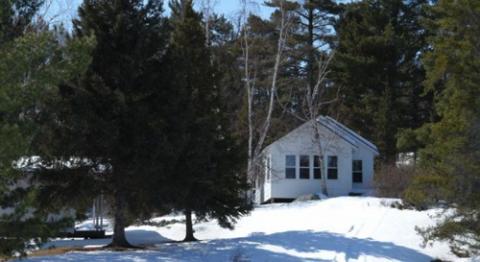Across the National Park System there are millions of privately held acres that fall within the boundaries of national parks. Recently, Delaware Water Gap National Recreation Area was able to acquire one small parcel that otherwise might have been developed. Voyageurs National Park is just one other example where efforts are ongoing to acquire inholdings.
In their fall newsletter, Voyageurs officials note that when the park was established in 1975, the National Park Service was legislatively mandated to acquire all private properties within its authorized boundary to fully protect its natural and recreational resources. As of today 52 parcels of private land remain inside the park’s boundaries, totaling 941 acres. The Park Service has a strong interest in seeing properties from willing sellers become part of Voyageurs so as to fulfill the agency's responsibility to protect all lands within park boundaries.
Why is that so important? Because privately owned lands within a national park are not protected to the same level as public lands and are regulated only by county zoning laws, thus allowing activities that are incompatible with the purposes for which the park was established, say Voyageurs officials.
Funding for land acquisition by the Park Service has been limited for many years, in large part because of decisions Congress has made both with funding the Land and Water Conservation Fund -- a key tool for funding the purchase of inholdings -- and appropriating the monies the fund does hold. This lack of appropriated funds for acquisition prevents the Park Service from purchasing private land parcels as they appear for sale on the open market.
The recent purchase of 91.5 acres within Delaware Water Gap NRA was made possible with funding from the conservation fund, a hopeful sign that more acquisitions will be made possible in the coming months and years. Until then, there are groups working with the Park Service to see that inholdings, when they become available, are not sold for development or other uses incompatible with a park's mission. The purchase at Delaware Water Gap was made possible by the intervention of The Nature Conservancy. At Voyageurs, the Voyageurs National Park Association, a nonprofit organization established in 1965 “to protect and promote the natural, recreational and historical resources of Voyageurs National Park,” has partnered with the national park and started a program called the Land Preservation Initiative.
The purpose of the Initiative is to help VNP acquire private lands inside the park from willing sellers. VNPA has committed to helping the park open the dialogue with interested landowners. VNPA has also launched a fund-raising campaign to raise funds that can be used to help make transfers happen in a way that is win-win for everyone. Any lands VNPA helps to purchase will be held in trust until they can be sold to the federal government and added to the park’s public lands.
This initiative began in 2007 with VNPA’s facilitation of an acquisition through a partnership with the Parks and Trails Council of Minnesota. A developed 3.4-acre private tract of land along the Rainy Lake shoreline within the park was unexpectedly placed on the market for sale. The parcel, located on the primary water route for most summer and winter visitors, was identified as a top acquisition priority for the park. Through this acquisition, the Parks and Trails Council of Minnesota now holds the deed in trust until federal funds can be secured by the NPS with the help of VNPA. The tract is safeguarded from future private development or other uses incompatible with the park’s purpose.
VNPA established the Wallace C. Dayton Voyageurs National Park Legacy Fund with a significant donation from the WM Foundation. Donations to the fund will support future acquisitions from willing sellers. Private lands within the park hold potential to become visitor day use sites and overnight campsites, or they may be returned to a more natural state by the National Park Service to benefit wildlife habitat and the scenic landscape. Information about this program or other activities of Voyageurs National Park Association may be found at http://www.voyageurs.org.


 Support Essential Coverage of Essential Places
Support Essential Coverage of Essential Places







Add comment